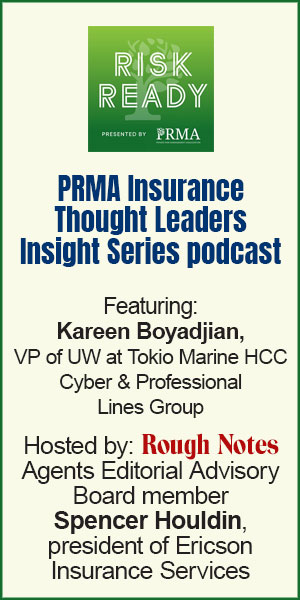Covering the ultimate insecurity—loss of income
By Thomas A. McCoy, CLU
Four years ago, the COVID-19 pandemic began unleashing waves of uncertainty in the workplace. Employers and employees had to figure out new ways to manage health, work, finances and caregiving. Today, in the aftermath of the crisis, employers are still responding to the effects of the pandemic as they assess their employee benefits plans.
Assuming workers view their physical and financial risks differently than they did pre-pandemic, what does that mean for their benefits preferences? One likely answer is that they have a greater understanding of the need to protect their earnings, no matter what the future may bring. Thus, disability income insurance has renewed appeal.
“Coming out of the pandemic, many workers have been forced to confront the risks they would face if their income ended as a result of a disabling injury or illness,” says Margaret Reid, product director for short-term and long-term disability, AD&D and value-added services for Reliance Matrix. “We’ve had good growth in both long-term and short-term disability over the last five years.”
Amalgamated Life Insurance Company also has experienced “consistent growth in our voluntary disability over the past five years,” says John Thornton, executive vice president, sales and marketing. “The pandemic did drive a significant increase in our disability sales, which is in line with what many disability carriers have experienced.
“The pandemic was, and still is, top of mind, reminding all of us how a very serious health threat can change lives instantly,” Thornton continues. “Before the pandemic, Americans did not feel the level of vulnerability they now experience after seeing hospitals filled with COVID-19 patients—hundreds of thousands of lives impacted—resulting in time away from work and deaths.
“Before the pandemic, Americans did not feel
the level of vulnerability they now experience.”
-John Thornton
Executive Vice president, Sales and Marketing
Amalgamated Life Insurance Company
“Consequently,” he says, “more families realized the valuable role disability insurance plays in protecting 50% to 70% of an insured’s income and ensuring that household expenses are met, bills are paid on time, and retirement and college savings are not compromised.”
Worker interest in disability is strong, although industry studies indicate there still is a lot of unfulfilled potential. MetLife’s 21st annual (2023) Employee Benefit Trends Study (EBTS) found that disability insurance was the fastest growing benefit request; 60% of workers considered it a “must have” benefit.
However, the percentage of employers offering the coverage has fallen from 58% in 2019 to 45% in 2023. It found that 35% of employees owned the coverage through their benefits plan.
LIMRA figures through the first three quarters of last year show a 9% gain in premium, derived from a 19% gain in short-term and a 2% decline in long-term.
According to Aflac’s Workforces Report for 2023-2024, ownership of voluntary short-term disability (35% of workers) and long-term disability (34%) trail only dental, life and vision insurance in popularity.
The Hartford refers to its long-term and short-term disability products as “income protection benefits.” It believes “income protection” is a more accurate description of the product, since it replaces part of your income for a wide variety of absences from work, including maternity.
Product names can be important. The Hartford’s 2023 Future of Benefits Study found that the term “disability” is misunderstood by a sizable number of workers. It found that 62% of Gen Z workers and 42% of millennials think long-term disability is meant for someone else; 50% of Gen Z and 29% of millennials think the same about short-term disability.
“Income protection benefits offer flexibility and assurance to workers who take time away from work due to an injury or illness,” says Megan Holstein, head of absence management for Group Benefits at The Hartford. “They are sought by workers of all generations, and by offering them, employers create a culture of care in the workforce.
“When an employer supports an employee who is out on leave for a disability claim, other employees know about it. They see the results of the income protection insurance and related work accommodations, and they think, ‘If that were me, I’d be taken care of also.’”
Holstein emphasizes that it is critical for people to understand that the trend to paid family medical leave doesn’t replace the need for disability insurance. “In fact, it’s highlighting the need for disability to work closely with FMLI (Family and Medical Leave Insurance) family leave or state-sponsored Paid Family and Medical Leave (PFML) insurance.”
She explains that many state paid leave programs have a weekly benefit cap based on wages. Short-term income protection benefits (disability) can help fill in the gap to supplement an employee’s state benefits if they earn more than the state program’s wage cap. Short-term disability can also pick up after the 12 weeks of state benefits are used up, filling the gap between when a state program may end and the transition to long-term disability begins after 26 weeks.
“When an employer supports an employee
who’s out on leave for a disability claim …
[other employees] think, ‘If that were me,
I’d be taken care of also.’”
—Megan Holstein
Head of Absence Management, Group Benefits
The Hartford
She also notes that in states where a paid leave program is optional, rather than mandatory, “these plans dovetail nicely with our income protection products.
“Income protection benefits are the center that creates a coordinated experience between other benefits and job entitlements such as paid family leave, company leave, FMLA (Family and Medical Leave Act) and workplace accommodations—with the important return to work and return to productivity that disability benefits offer.
“When a worker receives a diagnosis for an illness or injury, they are stressed and may not recall what benefits they signed up for,” Holstein continues. “All they want to know is, ‘Is my job protected, and is my income protected.’ We can be their point of contact to quickly get them through the process of filing their claim and helping them understand what other programs they are eligible for. These could include FMLA, the American with Disabilities Act (ADA) and additional voluntary benefits.”
Reid agrees that disability income protection in a benefits plan complements, rather than conflicts with, state and federal leave programs.
“Let’s say a worker in Massachusetts, a PFML state, gets injured and can’t work,” Reid explains. “They could be dealing with the federal program (FMLA), PFML, and a disability plan at work. Our service model and platform serve as the single contact point for the three different entities, and coordinate all the benefits available to the worker.
“In addition, under our long-term disability plan, we offer a work incentive and rehabilitation option to encourage return to work. An EAP and other valued-added services also can be added.
“Some people have mistaken notions about the protection provided by the Social Security Disability program,” Reid notes. “They don’t realize that it is hard to get approved, and there is a six-month waiting period to receive benefits. Under our short-term disability program, most of our eligibility decisions are made within two weeks; for long-term, within 45 days.”
According to MetLife’s EBTS, paid leave has become the second most important employee benefit (after medical insurance). More than three-quarters of employees (77%) in the study considered paid time-off to be a “must have” benefit.
The EBTS found that employees whose employers offered disability income and/or paid leave were 37% more likely to be satisfied with their benefits, and 28% less likely to consider leaving their employer in the next 12 months compared to employees without access to either benefit. They also were 16% more likely to feel cared for by their employer.
“People prioritize both their work and their health, and the health of their families,” says Holstein. “A leave of absence can be the nexus when these two priorities—work and health—come together. Employers are increasingly recognizing that a leave of absence, which includes disability income benefits or paid leave benefits is critical in order to retain talent.”
Reliance Matrix offers disability on a voluntary, employer-paid and contributory basis. Reid says, “Most of our short-term and long-term business is employer-paid, but we also have employee-paid and contributory options. We can write any size group from two lives up to jumbo employers.
“We have a special portfolio for employers with between two and 19 employees, which offers fewer choices to controls costs. This allows smaller employers who otherwise often can’t afford disability coverage to offer it to their workforces.
Thornton adds, “The size of an employer is not really a factor in the marketing of our disability products. Key employee demographics, such as age and gender may have an impact on the level and duration of benefits offered.”
Major carriers in the disability market report that maternity claims make up the highest percentage of short-term disability claims. Musculoskeletal injuries are one of the leading sources of disability claims for both short-term and long-term policies.
“One trend,” Thornton points out, “is that with more people working into their later years, disability claims among senior workers are increasing.”
Disability carriers say that claims for mental health disorders have been on the rise. Thornton says, “These include conditions such as clinical depression and/or anxiety and PTSD. Mental health benefits are now prevalent in the majority of disability insurance policies.
“Two other options we are starting to see coming into the disability market are a cost-of-living adjustment and a future increase option, which enables an insured to increase their coverage. Some policies also offer student loan payoff provisions,” Thornton says.
Holstein says one trend that is influencing disability and leave management is the large number of workers who are caregivers. “They are much more likely to go out on their own disability. Maybe they injure themselves lifting an adult, or their own mental health suffers. So, we are finding that when an employer can support caregiving, it will have a positive impact on disability.
“In states that allow insurers to file family leave insurance, we can offer a caregiving and parental leave income protection benefit that dovetails with a short-term disability product.”
“We’ve had good growth in both long-term and
short-term disability over the last five years.”
—Margaret Reid
Product Director, Short-term and Long-term Disability,
AD&D and Value-added Services
Reliance Matrix
The Hartford just introduced such a product to employers in Vermont, which provides FMLI without imposing new mandatory contributions. It will provide paid leave for both family and medical reasons.
Under the program, an employer with two or more employees can offer family and medical benefits combined or stand-alone family leave insurance. The benefits can be provided as employer-paid, contributory or on a voluntary basis.
“In combination with a short-term disability plan, it provides an option for employers that see the benefit of supporting employees for their time away, whether it’s because of their own medical needs, for parental leave or for caregiving responsibilities,” says Holstein.
For more information:
Amalgamated Life Insurance Company
www.amalgamatedbenefits.com
The Hartford
www.thehartford.com
Reliance Matrix
www.reliancematrix.com
The author
Thomas A. McCoy, CLU, is an Indiana-based freelance insurance writer.






